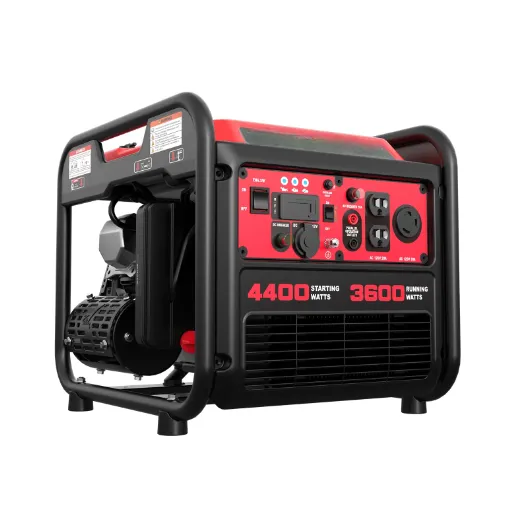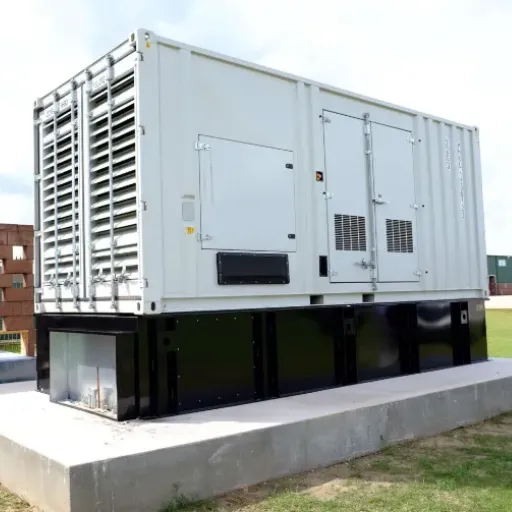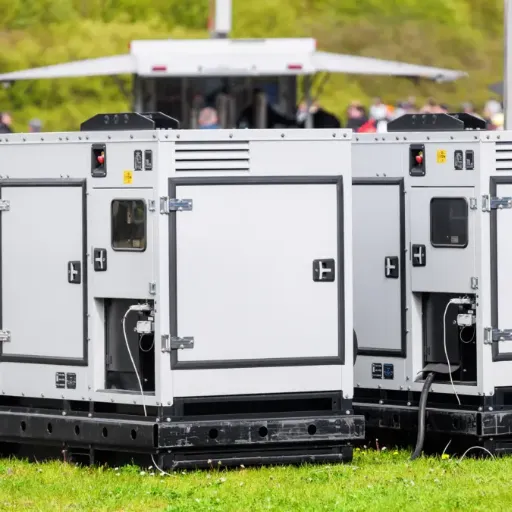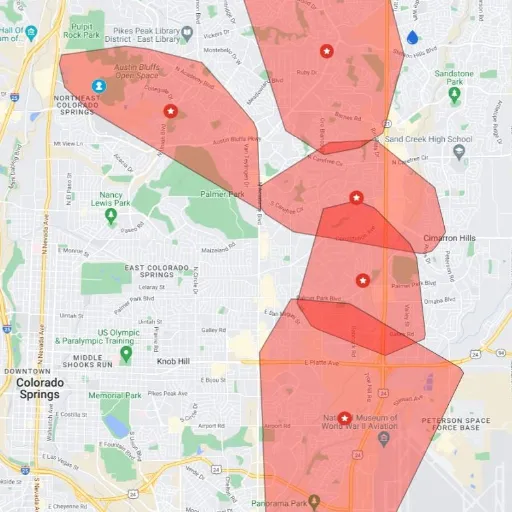Power outages and blackouts can become a reality instantly, leaving houses and businesses dark and interrupting the flow of life. Whether stormy weather is the cause, grid overloads, or unexpected emergencies, such events stand testimony to the prudence of preparing. Having a generator as an alternative power source can set you free: ensures your critical devices keep running, provides comfort, and saves you from massive interruptions. In the following discussion, we will highlight how vital generators are during an outage, the types of generators we have, and how you are to select the one that fits your needs. Stay with us as we ‘power’ your home/business through the challenges of unpredictable power outages.
Understanding Generators

Generators are machines engineered to supply electricity if their primary power source fails. They convert mechanical energy into electrical energy when there is a power outage so as to provide a reliable power supply. There are two types of generators: portable ones and standby ones. Portable generators have multiple uses; they are easy to transport and are suited for temporary or short-term power needs. Installing standby generators is done as a permanent act, and they automatically run whenever there is a power outage, thus creating an efficient power supply method. Critical factors for selecting an option are the power requirements for a home or business, length of use, and expenses.
What is a Generator?
Machines that convert mechanical energy to electrical energy provide alternative power sources in the case of outages or places without access to the electrical grid. A generator operates on the principle of electromagnetic induction, where a conductor, like a coil of wire, moves through a magnetic field to produce electricity. It thus becomes a lifeline for powering facilities such as data centers, hospitals, households, and commercial centers.
There are various types of generators suitable for multiple applications. Portable generators usually have power ratings of 2,000-12,000 watts and can provide power for emergency appliances and tools for short durations. Standby generators rate their power capacity from 7,000-150,000 watts and above and can power an entire building for extended durations.
According to the latest industry reports, from 2023 to 2029, the global portable generator market is expected to grow at a CAGR of 5.70%, owing to increased demand for reliable backup power solutions. Further, due to technological advancements in generators, more energy-efficient and environmentally friendly models have emerged, such as inverter generators that provide cleaner energy using less fuel and produce less noise.
When considering what generator to buy, it is crucial to consider the power needs, determine if the generator will be portable or fixed, and be aware of modern alternatives that meet energy and environmental concerns.
Types of Generators
|
Type |
Fuel Source |
Key Features |
Advantages |
Disadvantages |
Best Use Cases |
|---|---|---|---|---|---|
|
Portable |
Gasoline, Diesel, Propane |
Movable, 500- 17,500W output |
Affordable, versatile |
Noisy, manual operation |
Camping, job sites, and emergencies |
|
Inverter |
Gasoline, Propane |
Clean power, 1,000- 5,000W output |
Quiet, fuel-efficient |
Higher cost, limited power |
Electronics, outdoor events |
|
Standby |
Natural Gas, Diesel |
Automatic, 7,000W+ output |
Seamless backup, property value |
High cost, regular maintenance |
Homes, hospitals, and businesses |
|
Solar |
Solar Panels |
Renewable, battery storage |
Eco-friendly, low maintenance |
Weather-dependent, high upfront cost |
Off-grid living, emergencies |
|
Diesel |
Diesel |
Durable, 5kW-3,000kW output |
Reliable, fuel-efficient |
Noisy, high emissions |
Industrial, data centers |
|
Gasoline |
Gasoline |
Compact, 500-15,000W output |
Lightweight, easy to use |
Flammable, short lifespan |
Short-term power, DIY projects |
|
Natural Gas |
Natural Gas |
Continuous fuel supply |
Cost-effective, eco-friendly |
Needs gas line, installation cost |
Whole-house backup, businesses |
|
Propane |
Propane |
Clean-burning, dual-fuel options |
Long shelf life, versatile |
High fuel consumption, bulky tanks |
RVs, residential, commercial |
|
Hydrogen |
Hydrogen |
Zero emissions, fuel cells |
Clean energy, renewable potential |
High cost, limited infrastructure |
Research, remote locations |
|
Wind |
Wind Energy |
Renewable, 400W-several MW output |
No emissions, cost-saving |
Wind-dependent, high setup cost |
Remote areas, grid power |
Choosing the Right Generator for Your Needs
Getting the right generator is all about balancing your power needs with environmental concerns and your budget. Here’s a step-by-step breakdown, with up-to-date information and trends from 2023, to help you with your decision:
- Know Your Power Needs
Get an estimate of the total wattage required to power essential appliances, devices, or equipment during a power outage. From recent Google searches, we found that a typical household needs around 5,000 to 7,000 watts to power essential appliances such as refrigerators, lighting, and heating. Standby generators between 10 kw and 20 kw are usually advised for larger homes or those with more requirements. Portable generators suit smaller or temporary setups, typically ranging from 2,000 to 10,000 watts.
- Portability Vs. Fixed Installation
- Portable Generators: These generators are smaller and able to be moved around, usually being used for camping, construction, and emergency power. According to recent Google Shopping insights, they generally cost less ($500-$1,500 on average) and are apt for short-term needs or lower power output requirements.
- Standby Generators are fixed installations that offer automatic power backup during outages. They generally cost more (usually $2,000 to $10,000 in current discussions, including installation) but are better suited for large—and long-term power needs.
- Energy Efficiency and Environmental Concerns
Current-generation models carry the latest technology regarding energy-saving and environmental points. For example:
- Inverter Generators are 20-30% more fuel-efficient, generating clean power that can be safely fed into sensitive electronics such as laptops and mobile devices.
- Solar-powered generators are becoming a great green alternative with zero emissions, so you must either be ready for solar exposure or deal with limited power potential.
- Most newer units are EPA-compliant or adhere to even stricter emissions standards in various countries, thus minimizing environmental implications.
- Consider Noise Levels
Users’ reviews and search data show that noise level is undoubtedly the top consideration, especially for residential or recreational use. Look for ‘quiet’ models or those operating below the 60 decibel (dB) mark. For instance, the Honda EU2200i inverter generator is wildly acclaimed at around 48-57 dB, about the level of an ordinary conversation.
- Select by Fuel
Various types of fuel power generators, all having respective pros and cons:
- Gasoline: Easily accessible, though not appropriate for long-term storage;
- Propane: Burns clean and keeps for a long storage life, but generally has a slight power output disadvantage.
- Diesel: More power for your money on heavy use; buy it higher-priced, maybe.
- Dual or Tri-fuel generators can switch fuel sources, protecting flexibility and reliability.
- Safety Features and Smart Technologies
Features like carbon monoxide sensors and automatic shutoff, remote monitoring through apps, and automated maintenance reminders have become commonplace. These features probably make operating your generator safer and more convenient, leaving you peace of mind in an emergency.
With your specific power needs blended with this kind of data, the generator you pick will be reliable, efficient, and considered for your sustainability and convenience goals.
Using a Generator During a Power Outage

The following are some essential points that ensure the safe use of generators while supplying power during an outage:
- Keep the generator outside. To prevent carbon monoxide poisoning, it should be at least 20 feet away from your home. Also, ensure that the area is dry and well ventilated.
- Use proper extension cords: Only heavy-duty outdoor-rated extension cords must be used between generators and appliances. Check for any damage before using.
- Do not allow overloads: Take note of your appliances’ required power and ensure the generator can handle the combined load.
- Handle fuel safely: First, shut down the generator and let it cool down before refueling. Store fuel in approved containers away from living areas.
- Respect manufacturer instructions: Always follow all instructions and guidelines in the generator’s manual when setting up, using, and maintaining a generator.
Observing these factors can keep one safe while charging essential power during an outage.
How to Use a Generator Safely
One must use a generator safely to be safe with any machinery and maximize its performance. Below are some safety tips outlined to help you operate your generator safely while avoiding common hazards:
- Placing the Generator Outdoors
To prevent carbon monoxide buildup, place the generator outside at least 20 feet from one’s home or near a door or window. While it should be shielded from rain or snow, it must remain well-ventilated.
- Avoiding Load Over Capacity
Find out your generator’s wattage rating and plug only those devices or appliances that are rated below or equal to its wattage rating. This prevents overloading the generator and damage to the generator or the appliance plugged into it.
- Use the Right Extension Cords.
Use heavy-duty, outdoor-rated extension cords with a thick enough gauge level to handle the electrical load your appliances will require. If the cords overheat, they can be a fire hazard.
- Fueling Properly
The generator must constantly be refueled when it is off and cool. Store fuel in an approved container and make sure it is only the recommended type. A spill of fuel on a hot engine can start several disasters.
- Inspecting and Maintaining the Generator Regularly
Perform preventive maintenance according to the manufacturer’s instructions, such as checking the oil level, air filters, spark plugs, and general battery health. Proper maintenance makes the generator run efficiently and safely.
The above safety precautions will help reduce risks and ensure reliable operation during power disturbances. Also, always consult the manual for any specific instructions related to your generator.
Portable vs. Standby Generators
|
Parameter |
Portable Generators |
Standby Generators |
|---|---|---|
|
Fuel Type |
Gasoline, Diesel, Propane |
Natural Gas, Diesel, Propane |
|
Power Output |
500-17,500W |
7,000W and above |
|
Cost |
Lower upfront cost |
High initial investment |
|
Maintenance |
Periodic, user-performed |
Requires professional servicing |
|
Portability |
Easily movable with wheels/handles |
Fixed installation, not portable |
|
Noise Level |
Louder (70-90 decibels) |
Quieter with enclosures |
|
Startup |
Manual or pull start |
Automatic with transfer switch |
|
Fuel Dependency |
Needs frequent refueling |
Connected to a continuous fuel supply |
|
Best Use Cases |
Camping, small outages, and remote sites |
Home backup, businesses, and hospitals |
Benefits of a Home Standby Generator
|
Parameter |
Benefit |
|---|---|
|
Reliability |
Provides uninterrupted power during outages |
|
Convenience |
Automatic startup without manual intervention |
|
Safety |
Reduces risks from power surges or outages |
|
Property Value |
Enhances the resale value of the home |
|
Environmental Impact |
Cleaner energy with newer fuel-efficient models |
|
Durability |
Designed for long-term, continuous use |
|
Energy Efficiency |
Optimized fuel use for a consistent energy supply |
|
Appliance Protection |
Keeps essential devices running smoothly |
|
Peace of Mind |
Ensures comfort and security during emergencies |
|
Low Maintenance |
Requires minimal upkeep when professionally installed |
Generator Safety Tips
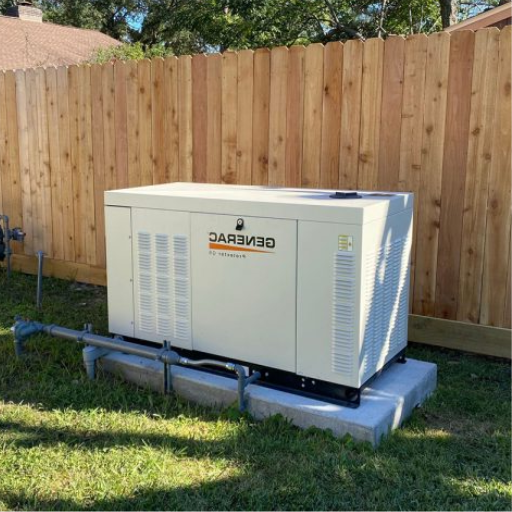
- Place Generators Outdoors: Always run generators outdoors in well-ventilated areas, away from windows, doors, and vents to avoid the buildup of carbon monoxide.
- Use Proper Cords: Use heavy-duty, outdoor-rated extension cords that correspond with the generator’s watt capacity.
- Avoid Overloading: Do not use a generator above its rated capacity, as this could lead to generator overheating and other electrical hazards.
- Fuel Safely: Always store fuel in approved containers. Refuel the generator only when it is off and has cooled down.
- Ground the Generator: Check the owner’s manual for grounding requirements to prevent shock hazards.
- Install Carbon Monoxide Detectors: For additional safety, guard your household with carbon monoxide alarms.
- Keep Dry: Do not operate the generator in wet conditions, and use covers or shelters explicitly designed for generator use.
- Regular Maintenance: To maintain safe usage, follow the instructions in the generator manual for inspection and servicing at regular intervals.
Protecting Your Home with Generator Safety
The most recent updates that proper generator safety to protect your home means providing ventilation, not using the generator indoors, conducting regular inspections, and following the manufacturer’s instructions precisely to avoid hazards.
Common Mistakes to Avoid When Using a Generator
|
Parameter |
Common Mistake |
|---|---|
|
Placement |
Operating indoors or in enclosed spaces |
|
Ventilation |
Ignoring proper airflow around the generator |
|
Fuel Usage |
Using old or incorrect fuel types |
|
Maintenance |
Skipping regular servicing and inspections |
|
Overloading |
Connecting more devices than the generator allows |
|
Safety |
Failing to use proper grounding methods |
|
Extension Cords |
Using weak or frayed extension cords |
|
Startup/Shut Down |
Neglecting to follow manufacturer’s instructions |
|
Refueling |
Refueling while the generator is running |
|
Weather Protection |
Exposing the generator to rain, snow, or wind |
Maintenance Tips for Your Generator
I focus on a few key maintenance steps to keep my generator in proper working condition to get it running efficiently. First, I check the oil level regularly and change it following the manufacturer’s recommendations. My other steps include cleaning the air filter, if possible, or replacing it if it is too dirty. Remember that a clogged air filter can affect the performance of your machine. Another point involves ensuring that the fuel remains fresh and is appropriately stored, since stale fuel can give rise to problems. Then I check on the spark plug and replace it if it’s worn out. Finally, I always stick to the manufacturer’s routine maintenance scheduling and conduct inspections to spot the beginning of any potential problems.
Appliances and Generator Power

When you want to use a generator to run appliances, it is essential to match the generator’s output power with the appliances’ power requirements. Find out how much wattage each appliance needs, including starting watts for refrigerators or air conditioners, since these appliances require extra power. Add the watts necessary to run all of the appliances and compare it with the generator’s rated capacity. Only critical appliances must be connected to the generator through a heavy-duty extension cord rated for outdoor use. This will ensure the generator is not overloaded and its operation will be safe.
What Appliances Can You Power with a Generator?
| Appliance | Power Requirement (Watts) | Compatibility with Generator |
|---|---|---|
|
Refrigerator/Freezer |
600-1200 |
Compatible with most portable generators |
|
Microwave |
800-1500 |
Requires medium-sized generators |
|
Lights |
10-100 per bulb |
Suitable for small generators |
|
Television |
100-300 |
Compatible with standard generators |
|
Laptops/Computers |
20-100 |
Requires inverter for clean power |
|
Air Conditioner |
700-4000 |
Needs a high-capacity generator |
|
Heater |
1500-3000 |
Best with standby generators |
|
Washing Machine |
500-1200 |
Works with medium generators |
|
Sump Pump |
800-1500 |
Essential during flooding, medium size |
|
Medical Devices |
Varies, ~400 |
Requires inverter generators for safety |
Calculating Your Power Needs
I calculate my power needs by first deciding which appliances I want to run during an outage and off-grid situation. Then, I consider the wattage requirements of every appliance being used in charging, especially the starting watts needed by appliances like refrigerators and air conditioners. Lastly, I added up all appliances’ wattage ratings, ensuring they did not exceed the rating of my generator. This provides safety and efficient use of the generators, thus preventing undue system overloading.
Managing Load with Your Generator
| Parameter | Guideline |
|---|---|
|
Load Prioritization |
Power essential devices before non-essentials |
|
Wattage Calculation |
Sum running and starting wattages accurately |
|
Avoid Overloading |
Keep the total load below the generator capacity |
|
Circuit Balancing |
Distribute the load across the generator circuits equally |
|
Use Transfer Switch |
Safely connect the generator to the home’s power system |
|
Safety Tips |
Never exceed the generator’s rated wattage |
|
Startup Sequence |
Start high-wattage appliances individually |
|
Maintain Constant Load |
Avoid frequent power surges or fluctuations |
|
Monitor Voltage |
Use devices to check voltage consistency |
|
Fuel Usage Planning |
Match run time to fuel availability |
References
-
Getting serious about safety and loss prevention emergency power and standby generators – Discusses safety requirements and the role of generators during power outages.
-
Use of fuel cells for improving on-site emergency power availability and reliability at nuclear power plants – Explores emergency power solutions, including gas generators, in critical facilities.
-
Coping with power failures – Provides practical advice on using portable generators during power outages.
Frequently Asked Questions (FAQ)
Do You Need a Backup Generator for Your Home During a Blackout?
Yes, a backup generator for your home can provide essential power during a blackout, ensuring that your appliances and devices remain operational. Knowing you have a reliable power source when utility power fails offers peace of mind.
What is a Basic Generator and How Does It Work?
A basic generator converts mechanical energy into electrical energy, typically from gasoline or propane. It can power essential appliances during a power failure, making it an invaluable asset during extended power outages.
How Much Power Can a Portable Generator Provide?
The power a portable generator can provide depends on its wattage rating. Most portable generators can supply enough power to run essential appliances, but it’s important to calculate how much power you need to ensure you select the right model.
What Are the Safety Measures for Using a Gas Generator?
When using a gas generator, ensure it is placed outside, at least 20 feet away from windows and doors, to prevent carbon monoxide poisoning. Always let the generator cool before refueling; never operate it in enclosed spaces.
Can I Use Natural Gas with My Backup Generator?
Yes, many backup generators are designed to run on natural gas or propane. Using natural gas can be more convenient, providing an uninterrupted fuel supply during an outage.
How Do I Ensure My Generator is Running Safely?
To ensure your generator is running safely, regularly maintain it according to the manufacturer’s instructions. Keep the generator dry, and never plug appliances directly into the generator without using a transfer switch to connect to your home’s electrical system.
What is a Whole-Home Generator and How Does it Work?
A whole-home generator is a permanent generator that automatically provides backup power to your entire home during a power outage. It connects to the home’s electrical system and kicks in within seconds of a power failure, ensuring you have power when needed.
How Can I Prepare for an Extended Power Outage?
To prepare for an extended power outage, invest in a reliable backup power system, stock up on fuel for your generator, and create an emergency plan. Consider the appliances you need to power and choose a generator that meets those needs.
What Fuel Does My Generator Need?
Depending on its design, your generator will typically require gasoline, propane, or natural gas. Always check the manufacturer’s specifications for the appropriate fuel type to ensure optimal performance.



